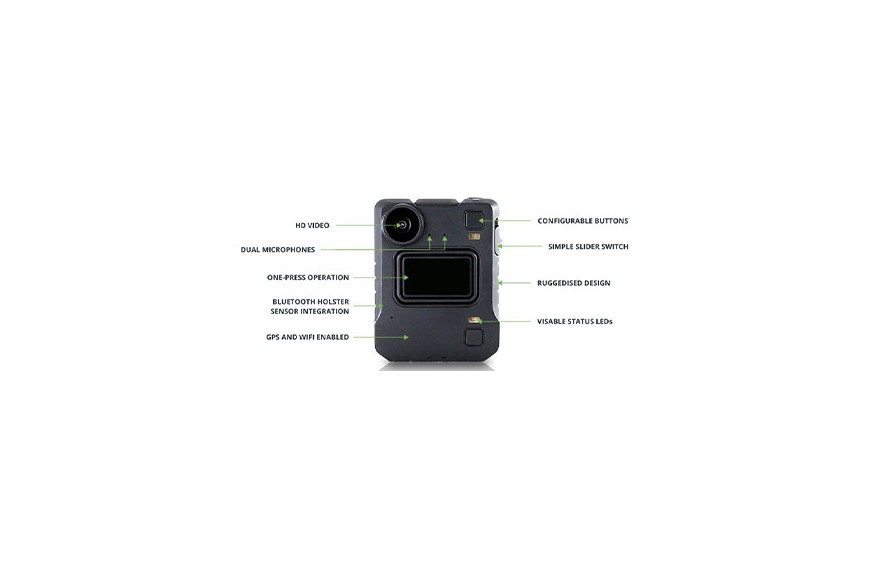How to Use a Body Camera
Body cameras, often utilised by law enforcement and security personnel, are compact devices designed to record audio and video encounters from the user's perspective. They serve a dual purpose of accountability and evidence collection, promoting transparency in interactions while also capturing crucial real-time data.
This guide aims to provide a comprehensive understanding of how to effectively use a body camera, ensuring optimal performance and reliable results. A proper understanding of its usage can contribute significantly to the quality of data captured and the overall effectiveness of the device.
What is a body camera
A body camera, also known as a body-worn camera, is a recording device that is typically used by law enforcement officers and Security to document their interactions with the public or gather video evidence at crime scenes.
These compact, wearable devices are positioned prominently upon the users uniform or on a head-mount to allow for optimal field-of-view capture.
In recent years, body cameras have gained prominence due to their ability to provide a visual and audio record of incidents, which can be instrumental in legal contexts, training, and maintaining public accountability.
Where to wear it
The optimal position for a body camera is on the chest area, specifically the upper torso. This placement is often recommended as it provides a broad, unobstructed field of view and closely aligns with the wearer's line of sight.
Clipping the camera on the front of the uniform is also beneficial as it is easily noticeable, reassuring the public that interactions are being recorded for transparency and accountability.
Furthermore, a chest-mounted camera is less likely to be knocked off or obstructed compared to head-mounted or shoulder-mounted options. It's essential to ensure the camera is securely fastened and the lens is kept clean for clear footage.
Please note, the positioning can slightly vary depending on the specific model of the body camera and the nature of the duty.
Power button
Once the body camera is securely positioned, locate the power button — its location will vary depending on the model. Press this button to turn on the camera. It's important to note that this action typically powers up the device but does not initiate recording.
Ensuring the camera is switched on before duty is crucial for readiness, but remember to start recording when necessary.
Record Button
The record button on a body camera is typically designed for easy access and operation, allowing users to commence recording quickly and intuitively. Its exact location varies depending on the specific model, but it is always positioned for optimal convenience.
By pressing the record button, the body camera starts recording. Notably, many body cameras offer a pre-record function, capturing anywhere from 30 to 60 seconds of footage before the record button is even pressed.
This function ensures that crucial moments leading up to an event are not missed. Once pressed, the preceding footage is automatically recorded and stored, providing a comprehensive record of incidents from a slightly earlier point in time.
Audio-Only Recording
There may be situations where visual recording could exacerbate an incident, making audio-only recording a preferable option. Many body cameras feature a designated button for activating the microphone while disabling the video. This function allows the user to capture an audio record of the interaction without provoking further conflict with visual recording.
Always refer to your specific model's user manual to locate this microphone button. By utilising this function, you can maintain a level of accountability and evidence collection even in sensitive situations.
Capture Button
Most body cameras are equipped with a capture button, a feature that allows the user to take a still photograph while the device is recording video. This function is particularly useful when there is a need to capture critical pieces of evidence or specific moments in time for later analysis.
To use the capture button, simply press it while the camera is in recording mode. It will take a snapshot without interrupting the video recording. The resulting images are usually high-resolution, providing detailed evidence that can be invaluable in investigations.
Always refer to your specific model's user manual to locate this button and for instructions on how to use it effectively. By leveraging this feature, you can enhance evidence collection and capture key moments of incidents with precision.
Using the Body Camera
When using a body camera, the primary objective is to achieve clear, unobstructed footage that accurately documents interactions and incidents. Therefore, it's important to master the correct operation of your body camera to ensure consistent, high quality recording.
Always switch on the device before starting your duty, so that it's ready to record at a moment's notice. To commence recording, press the record button - a single press usually suffices. Some body cameras feature a pre-record function, automatically recording events occurring 30-60 seconds prior to the actual activation of the record button. This feature helps capture crucial moments leading up to an event.
In more sensitive situations where visual recording could instigate further conflict, use the audio-only recording function. This allows you to capture the audio record of the interaction, while disabling the video.
Additionally, most body cameras include a capture button that allows instantaneous capturing of high-resolution photographs while video recording is in progress. Use this feature to snap key moments or crucial pieces of evidence for later scrutiny.
Make sure to keep the lens clean for clear footage and routinely check the battery level to prevent sudden shutdowns. After your duty, download the recorded data according to your device's instructions and charge the device for the next use.
Lastly, bear in mind that every model has its unique features and operation; thus, always refer to the specific user manual of your body camera. Proper usage of body cameras not only improves evidence collection but also reinforces transparency and accountability.
